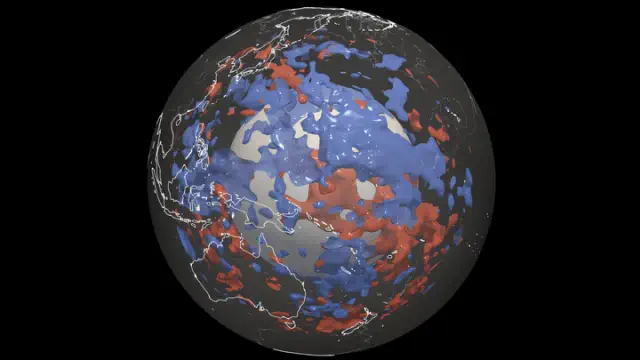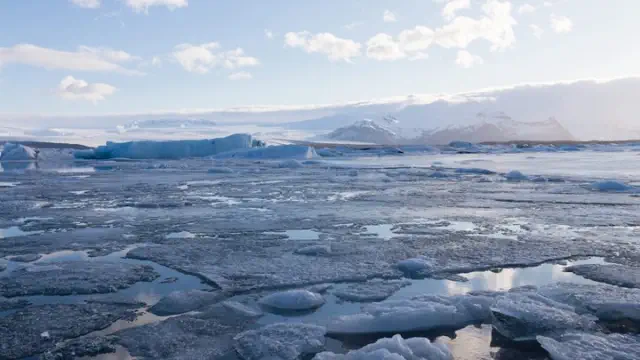
View pictures in App save up to 80% data.
In the intriguing realm of quantum physics, subatomic particles often defy the conventional laws of physics. They have the astonishing ability to be in multiple locations simultaneously, traverse solid objects, and transmit information instantaneously over great distances. While these phenomena might appear to be beyond belief, researchers in the quantum domain are investigating a variety of characteristics that were once considered unattainable.
A recent study conducted by physicists at Brown University has revealed the existence of a new category of quantum particles known as fractional excitons. These particles exhibit unusual behaviors that could greatly enhance researchers' comprehension of the quantum domain.
"Our research suggests the existence of a completely new category of quantum particles that possess no net charge and adhere to distinct quantum statistical behaviors," stated Jia Li, an associate professor of physics at Brown University.
"The most thrilling aspect of this discovery is that it reveals a variety of new quantum phases of matter, paving the way for future research, enhancing our comprehension of fundamental physics, and potentially creating new opportunities in the realm of quantum computing."
Along with Li, the research was carried out by three graduate students—Naiyuan Zhang, Ron Nguyen and Navketan Batra—and Dima Feldman, a professor of physics at Brown. Zhang, Nguyen and Batra are co-first authors of the paper, which was published in Nature on Wednesday, Jan. 8.
The team's research focuses on a phenomenon called the fractional quantum Hall effect, which extends the principles of the classical Hall effect. In the classical Hall effect, when a magnetic field is applied to a material carrying an electric current, it results in the generation of a transverse voltage.
The quantum Hall effect, observed under conditions of very low temperatures and strong magnetic fields, reveals that the lateral voltage rises in distinct, discrete increments. In the case of the fractional quantum Hall effect, these increments take on an even more unusual nature, as they rise by fractional values—representing a fraction of the charge of an electron.
In their study, the researchers created a configuration consisting of two slender layers of graphene, a two-dimensional nanomaterial, positioned apart by an insulating crystal made of hexagonal boron nitride. This arrangement enabled them to precisely manage the flow of electrical charges. Furthermore, it facilitated the generation of excitons, which are particles produced by the pairing of an electron with a corresponding absence of an electron, referred to as a hole.
The researchers subsequently subjected the system to extraordinarily powerful magnetic fields, millions of times more intense than those on Earth. This enabled the team to detect the unique fractional excitons, which exhibited a remarkable array of behaviors.
Fundamental particles are generally classified into two main types. Bosons are particles that can occupy the same quantum state, allowing multiple bosons to coexist without limitation. Conversely, fermions adhere to the Pauli exclusion principle, which states that no two fermions can be in the same quantum state at the same time.
The fractional excitons detected in the experiment, however, did not neatly align with either category. Although they displayed the fractional charges anticipated in the study, their behavior exhibited features characteristic of both bosons and fermions, functioning almost as a blend of the two. This resemblance made them akin to anyons, a class of particles that exist between fermions and bosons. Nevertheless, the fractional excitons possessed distinct properties that distinguished them from anyons as well.
Zhang stated, "This surprising phenomenon indicates that fractional excitons might constitute a completely new category of particles possessing distinct quantum characteristics. Our research demonstrates that excitons can be found within the fractional quantum Hall regime, and notably, some of these excitons emerge from the coupling of particles with fractional charges, leading to the formation of fractional excitons that exhibit behavior unlike that of bosons."
The discovery of a novel category of particles may eventually enhance the methods by which information is stored and processed at the quantum level, potentially resulting in quicker and more dependable quantum computers, the researchers highlighted.
"We've essentially opened up a new avenue for investigating and interacting with this phenomenon, and we're just starting to uncover its potential," Li remarked. "This is the first instance where we've experimentally demonstrated the existence of these particles, and now we’re exploring further into what they could reveal."
The upcoming phases for the team will focus on investigating the interactions of these fractional excitons and exploring the potential for controlling their behavior.
Feldman remarked, "It seems as though we're touching the very essence of quantum mechanics. This is an element of quantum mechanics that we were previously unaware of, or at the very least, didn't fully recognize until now."
More information: Naiyuan J. Zhang et al, Excitons in the fractional quantum Hall effect, Nature (2025). DOI: 10.1038/s41586-024-08274-3. www.nature.com/articles/s41586-024-08274-3
Supplied by Brown University
This story was originally published on Phys.org. Subscribe to our newsletter for the latest sci-tech news updates.








